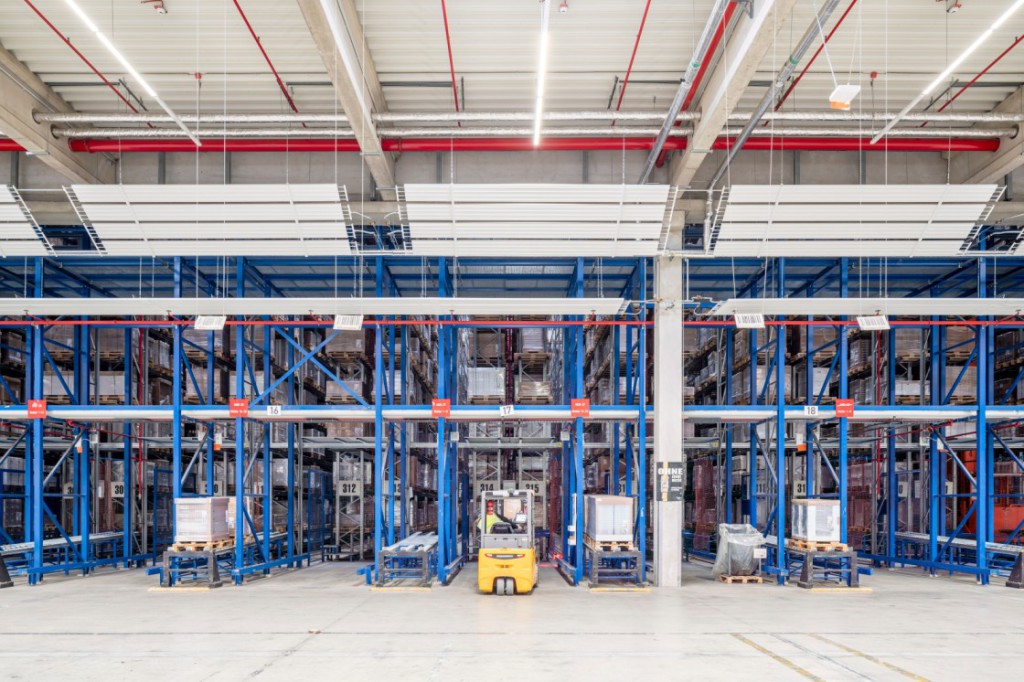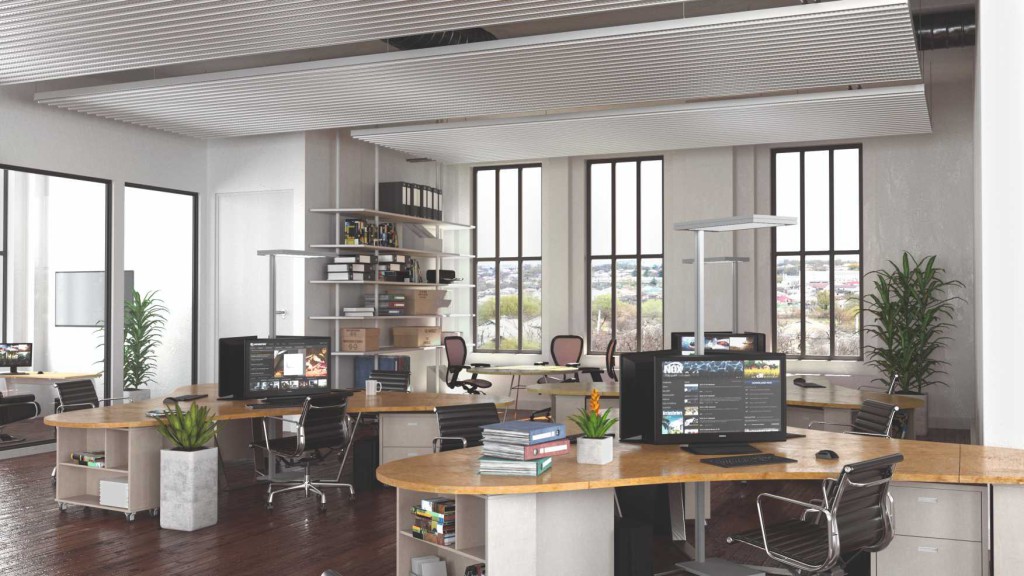Panel show

Chris Walley, Heating Product Manager at Zehnder Group UK, states the case for the role of radiant ceiling panels in modern building projects.
For consultants tackling new projects like commercial refurbishments, extensions or new constructions, radiant panels aren’t always the first choice. Yet these heating and cooling solutions offer practical, energy efficient and adaptable options to ensure a comfortable environment all year round while prioritising room space and low maintenance.
In commercial and industrial spaces with high volume areas, radiant panels are a fantastic choice. Installed discreetly on the ceiling, they provide efficient radiant heating and cooling for any space, from offices and warehouses to classrooms, gym halls and fitness centres.
Radiant panels warm objects and surfaces directly, ensuring even heating and great efficiency. Their slim design and ceiling placement save valuable room space, and they do not pose a burn risk, making them safe for environments with children, the infirm or elderly.
Architectural flexibility
Radiant ceiling panels respond quickly to temperature changes, offering an energy efficient solution using up to 40% less energy than traditional air heating methods while providing architectural flexibility. These panels integrate seamlessly into all types of lay-in ceilings, especially traditional grid ceilings. They feature a high quality powder coating finish and a discreet design, ensuring long service life.
Installation is straightforward, as the panels are lightweight and come ready to install with simple hydraulic connections. Unlike earlier industrial radiant panels that required additional headers, connectors and cover plates, the new designs simplify installation by reducing the number of joints and potential leak points, making the process quicker and more efficient. The panels are then able to work by directly heating surfaces and objects, ensuring an even distribution of warmth.
Radiant ceiling panels not only provide an energy efficient solution for both heating and cooling in light commercial settings but also make an excellent choice for commercial and industrial spaces. While smaller models often integrate directly into ceilings, becoming almost invisible, recent developments in industrial-style panels cater to more design-oriented spaces. These newer panels are suspended in open-ceiling environments, offering both aesthetic appeal and enhanced performance for heating and cooling.
Cooling solution

In terms of energy use, radiant ceiling panels stand out. By reducing reliance on air movement to distribute heat, they minimise energy losses typically seen in conventional heating systems. Additionally, radiant panels can serve as a cooling solution in the summer by circulating cooled water through the system.
Radiant conditioning systems are particularly good when working in conjunction with reversible heat pumps. The panels stay above dewpoint using a high cooling water temperature of 14-18°C for cooling and low heating water temperature for heating of 30-45°C, ideal for achieving highest possible heat pump coefficient of performance (CoP). The radiant effect saves 2°C in cooling (>20%), 3°C in heating (15%) and this radiant efficiency of the radiant system, coupled with the efficiency of a heat pump, makes the solution arguably the most energy efficient heating and cooling system available, even when compared to underfloor heating.
In industrial applications, such as factories and warehouses, radiant panels are typically installed in long strips—up to 50m in length. However, with the growing trend of repurposing industrial spaces for offices, restaurants and residential use, products like the Zehnder ZFP panel have been re-engineered into a compact, self-contained unit. This approach simplifies the specification and integration process for heating and cooling systems.
Additional features
There’s also potential to integrate additional features, such as lighting, sensors or speakers directly into the panel unit, enhancing their versatility.
As developments in panel technology continue, radiant panels are set to become an even more integral part of modern building systems. For consultants and builders looking for an adaptable, cost effective, low maintenance heating and cooling solutions, radiant panels present a forward-thinking option that aligns with both contemporary design and sustainability goals.







